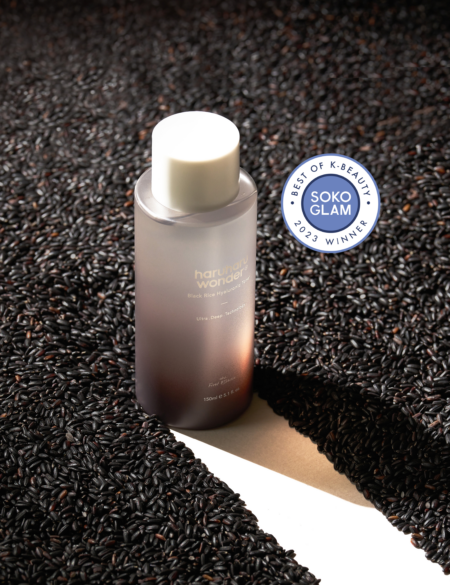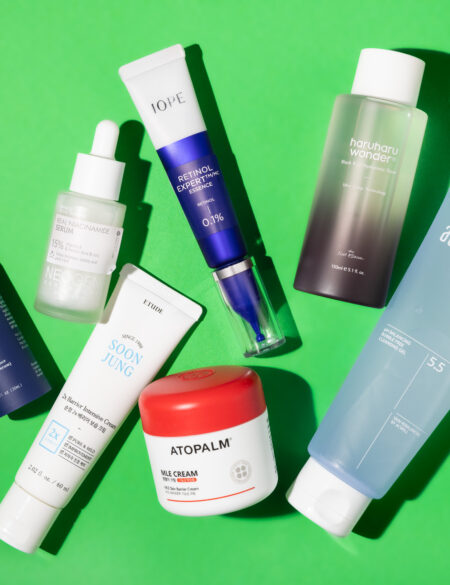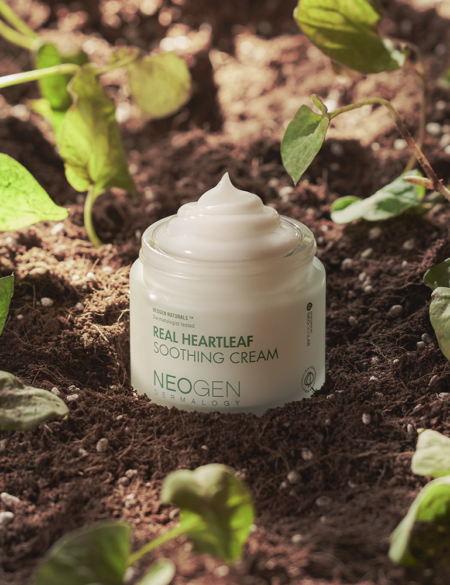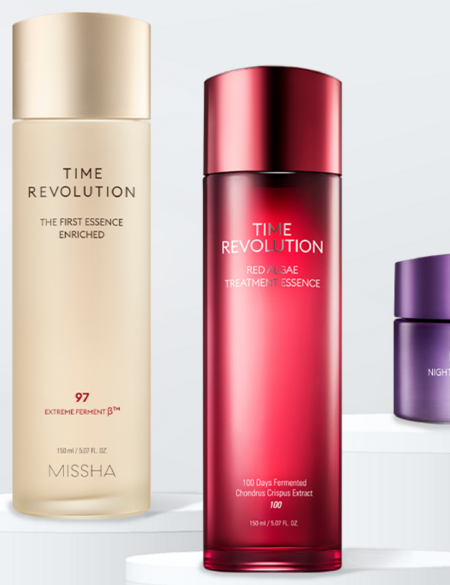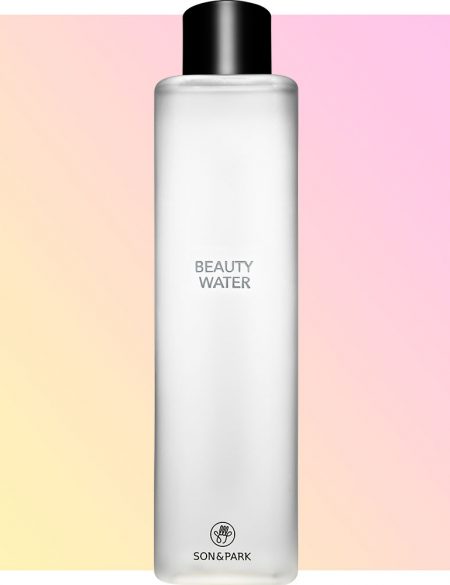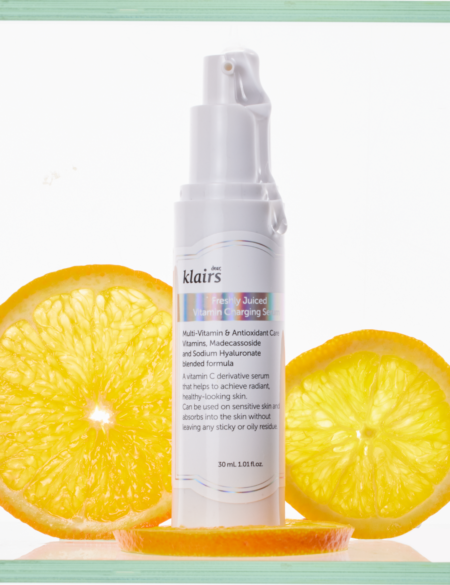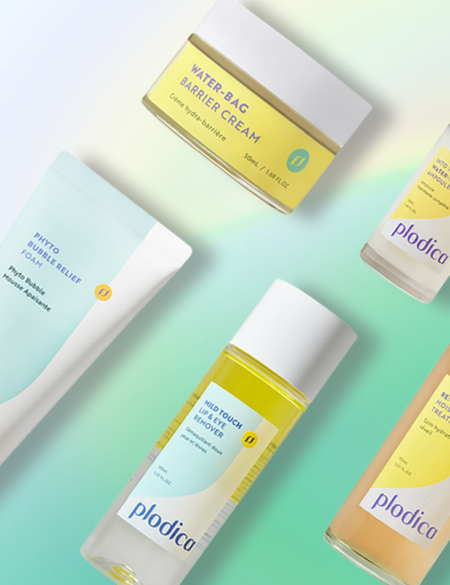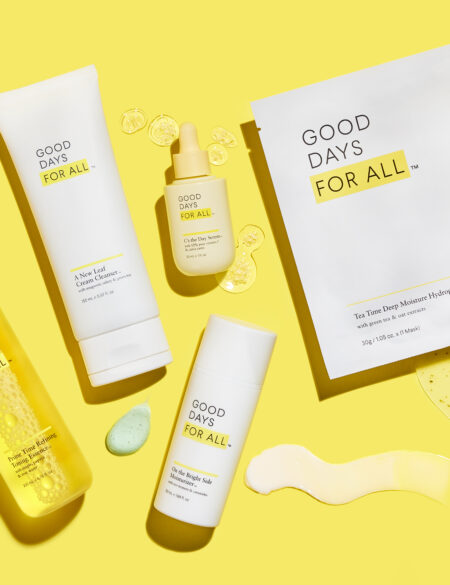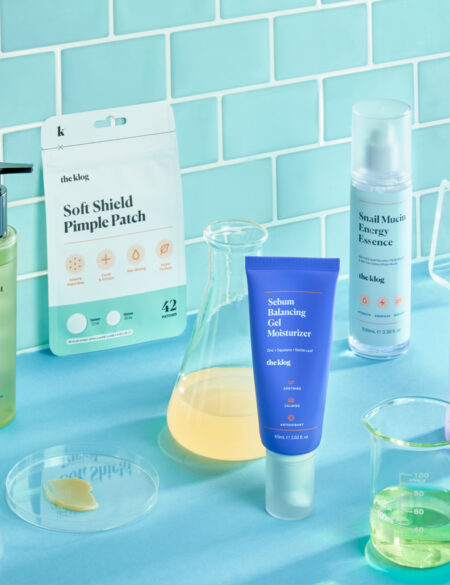You may know that chemical peels can improve skin texture and hyperpigmentation, but did you also know that they can be used to treat acne and signs of aging too? Learn more about the magic of the procedure below.
I don’t remember how old I was the first time I got a chemical peel. The early ones were quite uncomfortable; I recall planting myself in front of the fan in the treatment room and staring at my watch until the peel could be neutralized. Although I hated the minutes that the peel was on my skin, I couldn’t deny how much each treatment helped with my acne (especially on my back, which is a hard area to reach with acne medication).
Later in life, I worked for a company that manufactures some of the best chemical peels around, and I got to learn more about the magic they can work on your skin. Even though they’ve been around forever, peels continue to be some of the most effective and “trendy” skin care treatments because quite simply, they work. Read on to find out more about the skin care treatment that will get you glowing, guaranteed.
What is a chemical peel?
Chemical peels are typically made of a solution of an acid at a higher concentration than available in daily care products. They are used for a variety of skin conditions, including acne, acne scarring, hyperpigmentation, wrinkles, and uneven skin texture. There are tons of chemical peels out there, and the results that they produce depend on the skin being treated, the skin care regimen of the patient, and the strength of the peel, among several other factors.
The main peels you’ll get are either single-acid peels (for example, a 30% glycolic acid peel) or a blended peel (such as a Jessner’s peel, or modified Jessner’s peel). As such, peels can be classified by the acids they use. There are AHA-based peels, which will use one or more AHAs to achieve surface rejuvenation and a more even texture. These can also help with acne.
BHA peels, i.e., salicylic acid peels, are great for acne-prone skin as well. There are also TCA (trichloroacetic acid) peels, which are typically superficial or medium-depth peels. The more intense peels are really high concentrations of TCA, or, for the gnarliest ones, phenol-croton oil peels.
More significantly, peels are typically categorized by depth. By depth, we mean how deeply the peel will penetrate the skin.
Superficial peels (most AHA and BHA peels, for example) don’t require a ton of downtime, and act to exfoliate the outermost layer of the skin. They are a great treatment to get during your lunch break, and a great option for sensitive skin types. FYI, many people don’t “peel” when they get superficial peels, and if they do, it’s mild flaking rather than full-on molting.
Medium-depth peels, such as a Jessner’s or a higher-concentration TCA peel, as well as some retinoid peels, will require more downtime during which your skin may peel more aggressively.
Deep peels, such as phenol peels, are wild and will make you look like a mummy for a hot second, but they’re really effective at totally resurfacing the skin. These are serious procedures with prep, aftercare, and as such should ONLY be performed by experienced physicians.
How does a chemical peel work?
At the most basic level, getting a chemical peel is like applying a juiced-up chemical exfoliant.
AHA and BHA peels contain higher concentrations of those actives than any product you can buy as a consumer. When applied to the skin, they help to loosen the bond between skin cells, promote cell turnover, and provide all the benefits that AHA and BHA already provide in your skin care.
Deeper peels create a controlled injury that stimulates your skin’s natural healing response. The peels that seem like they’re melting your face off are encouraging new, healthy cells to emerge. Furthermore, as part of the wound healing response, collagen and elastin production are stimulated, so deep peels are great for wrinkles and laxity, too!
Ok, but what’s the catch?
Some chemical peels are not suited for darker skin tones because people with darker skin tones often have more sensitive skin, and they generally react to trauma with hyperpigmentation. There are, however, peels on the market suitable for darker skin tones, so it’s important to do your research!
The pre- and post-care for your peel will depend on the type of peel you’re getting. Generally speaking, however, you want to stop using retinoids or at-home products with AHAs and BHAs a few days before your peel to ensure that the peel doesn’t penetrate too deeply.
RELATED: How to Take Care of Your Skin After a Chemical Peel
With deeper peels or a peel that penetrates more deeply than intended, you can often get a little bit of blanching (or a lot, as sometimes this is the desired result), in which the skin turns white and may result in some deeply peeling or even oozing areas. I personally have blanched before in certain spots, but it’s never oozed; I’ve just peeled more aggressively in the spots where I blanched.
Chemical peels will also make you much more sensitive to the sun, so it’s crucial to be extra diligent about your sunscreen use after a peel. You also want to ensure your skin doesn’t get too hot, so avoid activities like hot yoga for a few days following.
Bottom Line
Peels are seriously amazing skin care treatments because of their versatility and efficacy. You can get a lunchtime peel, or you can shed your facial skin like a snake. You can deal with acne and folliculitis, or you can target larger structural concerns like loss of elasticity. More importantly, they’re usually pretty cost-effective compared to other treatments that can deliver comparable results.
I encourage you to look deeper into chemical peels and consider if they’d be the right supplement to your at-home skin care regimen. If you decide to go ahead with a peel, always go to a licensed aesthetician and never get a deep peel from anyone other than a physician or someone under the supervision of a physician.



